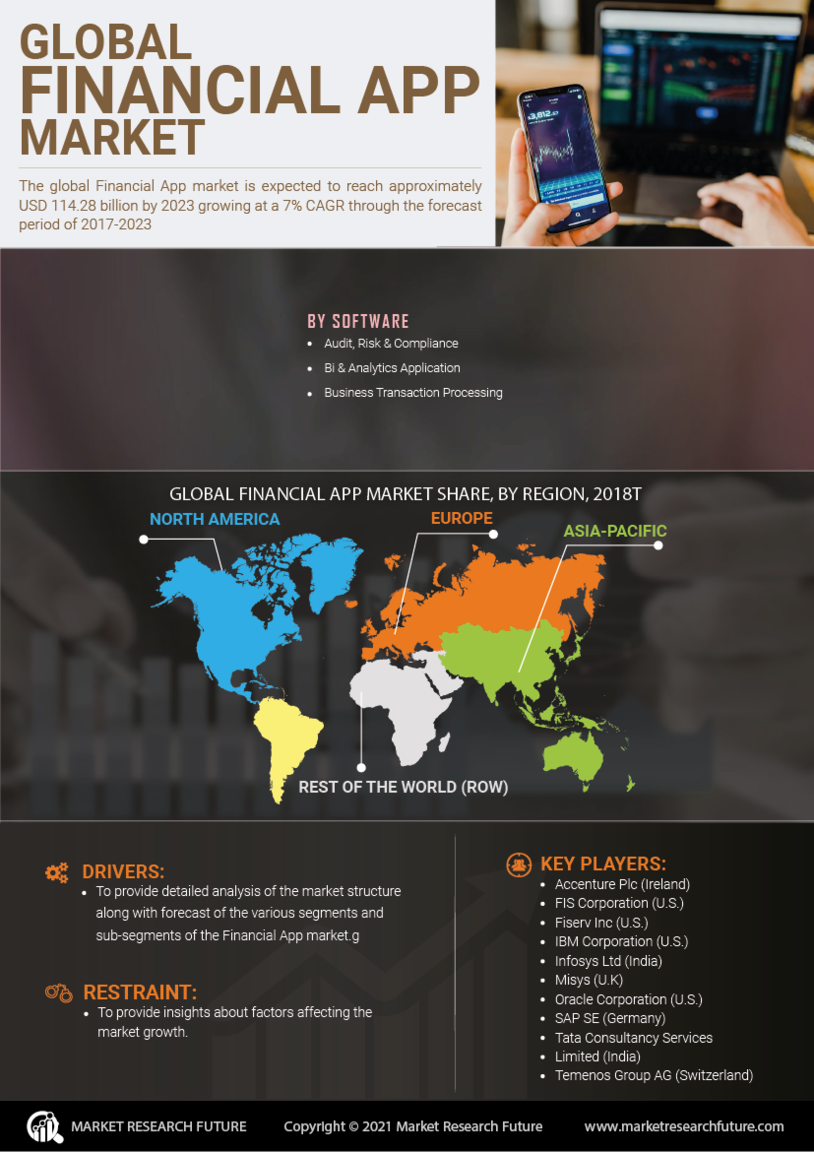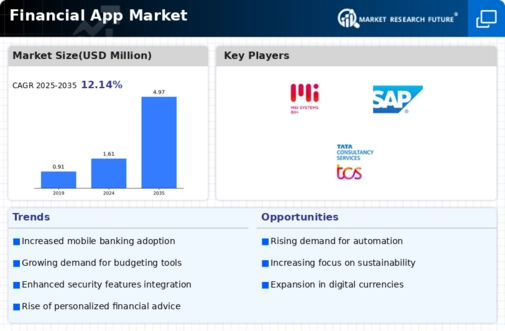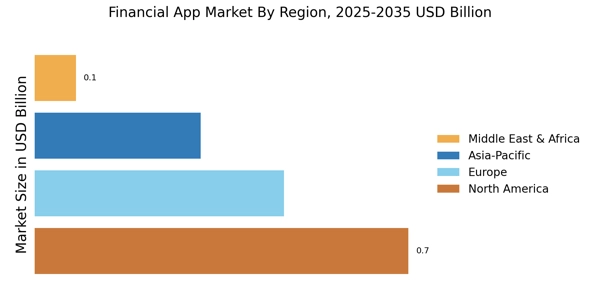The Financial App Market is currently characterized by a dynamic competitive landscape, driven by rapid technological advancements and evolving consumer preferences. Key players such as PayPal (US), Square (US), and Revolut (GB) are at the forefront, each adopting distinct strategies to enhance their market positioning. PayPal (US) continues to innovate its payment solutions, focusing on expanding its ecosystem through strategic partnerships and acquisitions. Square (US), on the other hand, emphasizes its commitment to small businesses, leveraging its point-of-sale systems and financial services to capture a larger share of the market. Meanwhile, Revolut (GB) is aggressively pursuing international expansion, aiming to penetrate new markets while enhancing its product offerings to attract a diverse customer base. Collectively, these strategies contribute to a competitive environment that is increasingly focused on innovation and customer-centric solutions.
The business tactics employed by these companies reflect a nuanced understanding of market demands. For instance, localizing services and optimizing supply chains are critical for enhancing customer experience and operational efficiency. The Financial App Market appears moderately fragmented, with a mix of established players and emerging startups. This fragmentation allows for a variety of service offerings, yet the influence of major players remains substantial, shaping market trends and consumer expectations.
In August 2025, PayPal (US) announced a strategic partnership with a leading cryptocurrency exchange, aiming to integrate cryptocurrency transactions into its platform. This move is significant as it positions PayPal (US) to capitalize on the growing interest in digital currencies, potentially attracting a new segment of tech-savvy consumers. The integration of cryptocurrency services could enhance user engagement and drive transaction volumes, thereby reinforcing PayPal's competitive edge in the financial app landscape.
In September 2025, Square (US) launched a new suite of financial management tools tailored for freelancers and gig economy workers. This initiative reflects Square's strategic focus on addressing the unique financial needs of this demographic, which has been increasingly underserved. By providing tailored solutions, Square (US) not only strengthens its market position but also fosters customer loyalty among a growing segment of the workforce.
In July 2025, Revolut (GB) expanded its services to include a new savings feature that offers competitive interest rates on deposits. This strategic enhancement is indicative of Revolut's commitment to providing comprehensive financial services, thereby attracting users who seek both transactional and savings capabilities within a single platform. Such innovations are likely to enhance user retention and attract new customers, further solidifying Revolut's position in the market.
As of October 2025, the Financial App Market is witnessing trends that emphasize digitalization, sustainability, and the integration of artificial intelligence. Strategic alliances among key players are increasingly shaping the competitive landscape, fostering innovation and enhancing service delivery. Looking ahead, it is anticipated that competitive differentiation will evolve, with a shift from traditional price-based competition to a focus on technological innovation, customer experience, and supply chain reliability. This evolution underscores the importance of adaptability and forward-thinking strategies in maintaining a competitive advantage in the rapidly changing financial app ecosystem.


















Leave a Comment